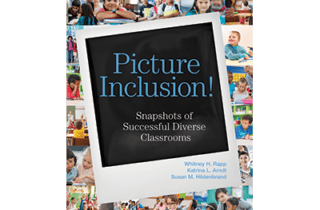Presented by Nick Nanton, Emmy Award-Winning Director, Producer, and Host, DNA Films USA; Maya Goodall, Chief Marketing Officer, CORE Learning; and Kristie Shelley, Chief Product Officer, CORE Learning
edWeb.net is excited to announce that Digital Promise’s Center for Inclusive Innovation has launched Inclusive Innovation to Transform Education, a free professional learning community on edWeb.net where educators can share ideas, research, and practices to foster the creative ingenuity of schools working in partnership with communities to create equitable, powerful learning opportunities for historically and systematically excluded students.
Presented by Lindsay Jones, CEO, CAST; and Sarah Wisecarver, Ventures Educator, UDL Team Facilitator, Hampstead Central School (NH)
Moderated by Barbara Pape, Senior Director, Learner Variability Project, Digital Promise
Presented by Jenna Mancini Rufo, Ed.D., Founder, empowerED School Solutions; and Julie Causton, Ph.D., Founder and CEO, Inclusive Schooling
Presented by Dr. Sharon Jones, Director of Learning Impact for Prenda, K12 Computer Science Integration and Curriculum Development Expert, Radio Show Host, and Founder and CEO of the dot. Consulting and of the nonprofit Dottie Rose Foundation
In this edWebinar learn how to provide a more accessible and equitable learning environment and experience for all learners.
Picture inclusion in your classroom! In this edWebinar, inclusion experts present practical inclusion strategies you can easily adapt for your classroom.
In this edWebinar, learn about ideas that work for the inclusive classroom (and often work just as well for students without disabilities).
Autism spectrum disorder (ASD) is, at its heart, a processing disorder. And while the students with ASD face a variety of challenges depending on where they fall on the spectrum, even those considered high functioning have difficulties with pragmatic social language and understanding social interactions. So, when educators mainstream students with ASD and hope that they will learn how to interact in the classroom just by watching their peers, the educators are setting up the students for failure. Nina Finkler, a learning consultant with years of experience working with students with ASD, says success comes when schools actually acknowledge the different needs of students with ASD and set up individualized supports throughout their learning career. In her edWebinar “Meeting the Needs of Students with ASD Within the Mainstream Classroom”, Finkler outlined the biggest challenges with mainstreaming and key strategies for helping them thrive in their new environment.
In this edWebinar, the presenter shows special educators how to choose and navigate their own individual path to educational leadership.










